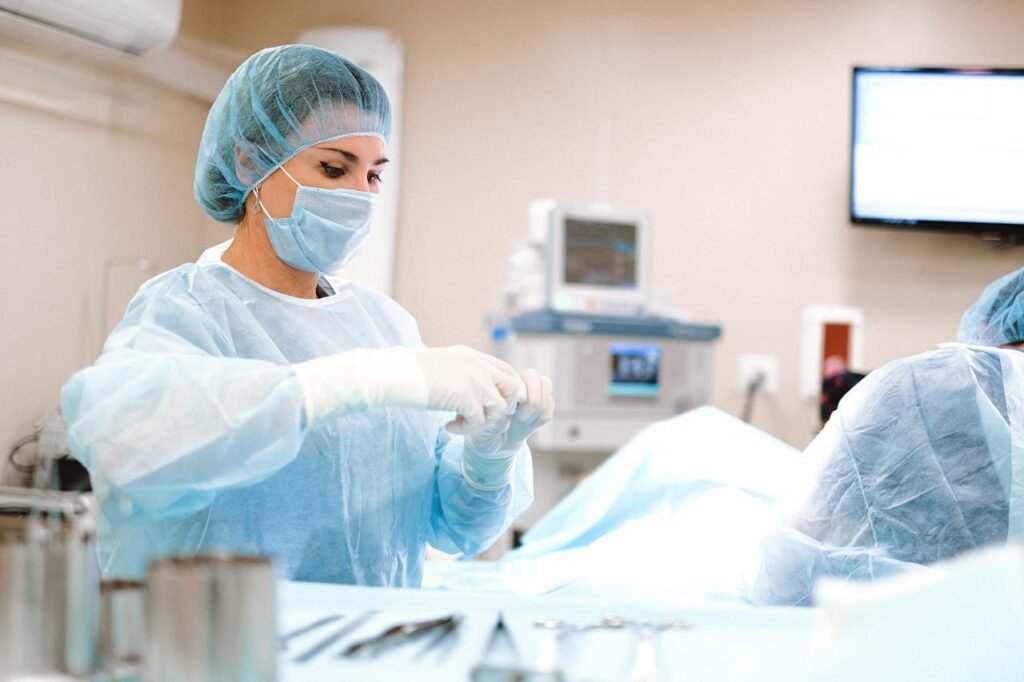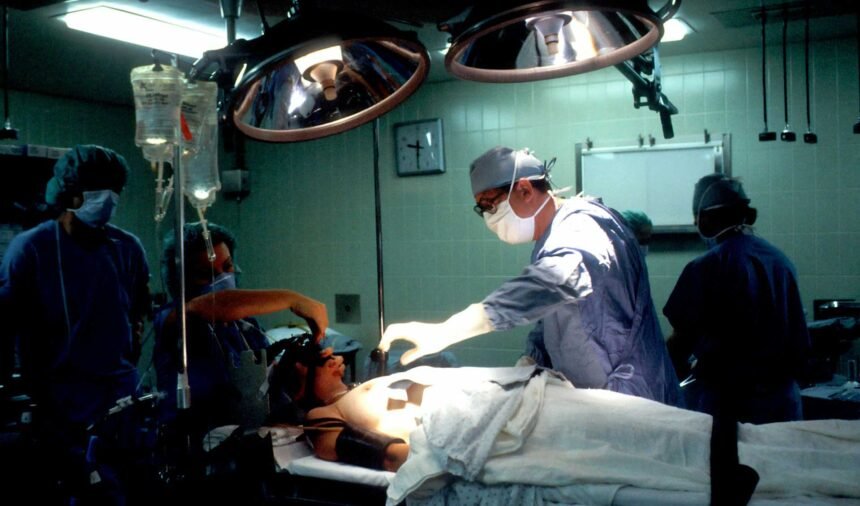Jawline surgery has become increasingly popular in recent years as more people seek to enhance their facial features. This comprehensive guide will explore everything you need to know about jawline surgery, from its various techniques to recovery and results.
Based on the search results from Healthline.com, here are 5 relevant internal link recommendations for your page about Jawline Surgery:
- Anchor text: “V-line jaw surgery”
Link to: https://www.healthline.com/health/cosmetic-surgery/v-line-surgery - Anchor text: “jaw implants”
Link to: https://www.healthline.com/health/cosmetic-surgery/jaw-implants - Anchor text: “double jaw surgery”
Link to: https://www.healthline.com/health/double-jaw-surgery - Anchor text: “types of jaw surgery”
Link to: https://www.healthline.com/health/surgery-for-jaw - Anchor text: “correcting a weak jawline”
Link to: https://www.healthline.com/health/weak-jawline - Anchor text: “facial feminization surgery”
Link to: https://www.healthline.com/health/cosmetic-surgery/surgery-for-jawline
These recommendations provide relevant information related to jawline surgery, different types of jaw procedures, and associated topics. The suggested anchor texts and link destinations offer additional value to readers interested in learning more about jawline surgery and related cosmetic procedures.
Certainly! Here are additional headings to further expand the article on Jawline Surgery:
Non-Surgical Alternatives to Jawline Surgery: Exploring Your Options
This section would discuss non-invasive or minimally invasive alternatives to traditional jawline surgery. It would cover options such as:
- Dermal fillers for jawline enhancement
- Botox for jaw slimming
- Thread lifts for jawline definition
- Ultrasound and radiofrequency treatments
The content would compare these alternatives to surgical options, discussing their benefits, limitations, and suitability for different candidates.
Jawline Surgery for Different Age Groups: Considerations and Approaches
This heading would explore how jawline surgery differs for various age groups, including:
- Young adults seeking early enhancement
- Middle-aged individuals combating signs of aging
- Older patients combining jawline surgery with other rejuvenation procedures
It would discuss age-specific concerns, surgical techniques, and expected outcomes for each group.
Jawline Surgery and Gender: Tailoring Techniques for Masculine and Feminine Ideals
This section would delve into how jawline surgery approaches differ based on gender-specific aesthetic goals. It would cover:
- Techniques for enhancing masculine jawlines
- Procedures for creating softer, more feminine jaw contours
- The role of jawline surgery in gender affirmation procedures
Combining Jawline Surgery with Orthodontics: A Comprehensive Approach
This heading would explore the relationship between jawline surgery and orthodontic treatments. It would discuss:
- How orthodontic issues can affect jawline appearance
- Cases where combined treatment may be beneficial
- The process of coordinating surgical and orthodontic interventions
Cultural Perspectives on Jawline Surgery: Global Trends and Preferences
This section would examine how different cultures view jawline surgery, including:
- Popular jawline shapes in various regions
- Cultural influences on beauty standards related to jaw structure
- How these perspectives influence surgical techniques and patient requests
Jawline Surgery and Facial Proportions: The Science of Aesthetics
This heading would delve into the mathematical and artistic principles behind facial proportions and how they relate to jawline surgery. It would cover:
- The golden ratio and its application to jawline aesthetics
- How surgeons use facial analysis to plan procedures
- Balancing jawline enhancements with other facial features

Jawline Surgery for Medical Reasons: Beyond Aesthetics
This section would explore cases where jawline surgery is performed for medical rather than purely cosmetic reasons. It would discuss:
- Correcting jaw misalignments
- Addressing sleep apnea through jaw advancement
- Reconstructive procedures following trauma or disease
The Role of 3D Imaging and Virtual Planning in Jawline Surgery
This heading would focus on technological advancements in jawline surgery planning and execution. It would cover:
- How 3D imaging helps in surgical planning
- Virtual try-ons for patients to visualize potential outcomes
- The use of 3D printing in creating custom implants
Jawline Surgery and Social Media: The Influence of Digital Culture
This section would examine the impact of social media on jawline surgery trends. It would discuss:
- The rise of the “Instagram face” and its emphasis on strong jawlines
- How filters and editing apps affect perceptions of ideal jaw shapes
- The role of influencers in popularizing jawline enhancements
Long-Term Maintenance After Jawline Surgery: Ensuring Lasting Results
This heading would provide information on how to maintain the results of jawline surgery over time. It would cover:
- Lifestyle factors that can affect jawline appearance
- Potential need for touch-up procedures
- Skincare and non-surgical treatments to complement surgical results
Each of these headings would be expanded to approximately 300 words, maintaining the focus on jawline surgery and related keywords. The content would remain engaging, informative, and optimized for search engines while providing valuable information to readers interested in various aspects of jawline surgery.
Understanding Jawline Surgery: What It Is and Who It’s For
Jawline surgery, also known as jaw contouring or mandibular contouring, is a cosmetic procedure designed to reshape and enhance the lower part of the face. This surgical intervention can address a variety of concerns, including:
- Weak or receding chin
- Asymmetrical jawline
- Overly square or wide jaw
- Lack of definition in the lower face
Candidates for jawline surgery typically include:
- Adults with fully developed facial structures
- Individuals dissatisfied with their jawline appearance
- Those with realistic expectations about the outcomes
It’s important to note that jawline surgery is not a one-size-fits-all procedure. Each patient’s needs and desired results are unique, which is why a thorough consultation with a qualified surgeon is crucial before proceeding with the surgery.
Before considering jawline surgery, it’s essential to understand that while it can significantly improve your facial profile, it should be approached with careful consideration and realistic expectations.
Types of Jawline Surgery: Techniques and Approaches
Jawline surgery encompasses several techniques, each tailored to address specific concerns and achieve desired results. The main types of jawline surgery include:
- Chin Augmentation:
- Involves placing an implant or using fillers to enhance chin projection
- Can be combined with other procedures for a more balanced look
- Jaw Reduction:
- Reduces the width of the lower jaw for a slimmer appearance
- Often popular in Asian countries where a V-shaped face is desired
- Jaw Angle Augmentation:
- Enhances the angle of the jaw for a more defined look
- Can be achieved through implants or fat grafting
- Sliding Genioplasty:
- Involves cutting and repositioning the chin bone
- Allows for more significant changes in chin projection and shape
- Mandibular Angle Reduction:
- Reduces prominence of the jaw angles for a softer look
- Can be combined with jaw reduction for overall slimming
Each of these techniques can be performed individually or in combination, depending on the patient’s needs and desired outcome. The choice of technique will be determined by factors such as:
- Existing facial structure
- Desired changes
- Skin elasticity
- Overall health of the patient
It’s crucial to discuss these options in detail with your surgeon during the consultation phase. They will be able to recommend the most suitable approach based on your unique facial anatomy and aesthetic goals.
Remember, jawline surgery is a significant procedure that requires careful consideration and planning. The right technique can make a dramatic difference in your appearance, enhancing your natural features and boosting your confidence.
Jawline Surgery Before and After: What to Expect
One of the most exciting aspects of jawline surgery is seeing the transformation in your appearance. Jawline surgery before and after results can be quite dramatic, but it’s important to have realistic expectations and understand the process.
Before Surgery:
- Comprehensive consultation and facial analysis
- Discussion of goals and expected outcomes
- Pre-operative instructions and preparations
- Medical evaluations to ensure you’re fit for surgery
After Surgery:
- Initial swelling and bruising (can last several weeks)
- Gradual reveal of results as swelling subsides
- Follow-up appointments to monitor healing
- Final results typically visible after 3-6 months
It’s crucial to remember that everyone’s healing process is unique. While some patients may see significant changes soon after surgery, others might need more time for the final results to become apparent.
Jawline surgery before and after photos can be a helpful tool in visualizing potential outcomes. However, keep in mind that:
- Results vary from person to person
- Photos should be of patients with similar facial structures to yours
- Lighting and angles can affect the appearance of results in photos
Your surgeon should be able to provide you with a realistic preview of your potential results using advanced imaging technology. This can help you make an informed decision about proceeding with jawline surgery.
Remember, the goal of jawline surgery is to enhance your natural features, not to completely change your appearance. The best results are those that look natural and harmonious with your overall facial structure.
Recovery and Aftercare: Ensuring Optimal Results from Jawline Surgery
The recovery process following jawline surgery is crucial for achieving the best possible results. While the specifics may vary depending on the exact procedures performed, here’s a general timeline of what to expect:
Immediate Post-Op (1-3 days):
- Swelling and bruising at their peak
- Prescription pain medication may be needed
- Soft diet required
- Rest and limited movement recommended
First Week:
- Swelling begins to subside
- Transition to over-the-counter pain relief
- Return to light activities
- Continue with soft diet
Weeks 2-4:
- Gradual return to normal activities
- Swelling continues to decrease
- Improvements in comfort and mobility
Months 1-3:
- Most swelling resolved
- Results becoming more apparent
- Return to full activities in most cases
Key aftercare tips for optimal jawline surgery results:
- Follow all post-operative instructions carefully
- Attend all follow-up appointments
- Wear any prescribed compression garments as directed
- Maintain a healthy diet to support healing
- Avoid strenuous activities until cleared by your surgeon
- Protect your skin from sun exposure
- Stay hydrated and get plenty of rest
It’s important to be patient during the recovery process. While you may be eager to see your new jawline, remember that healing takes time. The final results of your jawline surgery may not be fully apparent for several months.
If you experience any unusual symptoms or have concerns during your recovery, don’t hesitate to contact your surgeon. They are there to support you throughout the entire process and ensure you achieve the best possible outcome from your jawline surgery.

Risks and Considerations: Making an Informed Decision About Jawline Surgery
While jawline surgery can provide significant aesthetic improvements, it’s important to be aware of the potential risks and considerations associated with the procedure. Being well-informed will help you make the best decision for your individual circumstances.
Potential risks of jawline surgery include:
- Infection
- Bleeding or hematoma
- Adverse reaction to anesthesia
- Nerve damage (temporary or permanent)
- Asymmetry
- Unsatisfactory aesthetic results
- Changes in sensation
- Scarring (usually minimal and hidden)
Considerations before opting for jawline surgery:
- Cost: Jawline surgery is typically not covered by insurance and can be expensive
- Time commitment: Recovery can take several weeks to months
- Potential need for revision surgery
- Impact on daily life during recovery period
- Long-term maintenance (e.g., implant replacement if used)
It’s crucial to discuss these risks and considerations in detail with your surgeon during your consultation. They can provide personalized information based on your specific case and help you weigh the potential benefits against the risks.
Remember, choosing to undergo jawline surgery is a personal decision. Take your time to consider all aspects, and don’t hesitate to seek a second opinion if you’re unsure. The goal is to make a decision that you’re comfortable with and that aligns with your aesthetic goals and overall health.
Ultimately, when performed by a qualified and experienced surgeon, jawline surgery can be a safe and effective way to enhance your facial profile. However, it’s essential to approach the decision with a thorough understanding of both the benefits and potential drawbacks.
Table: Comparison of Jawline Surgery Techniques
| Technique | Primary Goal | Recovery Time | Permanence |
|---|---|---|---|
| Chin Augmentation | Enhance chin projection | 1-2 weeks | Long-lasting (implants) or Temporary (fillers) |
| Jaw Reduction | Slim the lower face | 2-4 weeks | Permanent |
| Jaw Angle Augmentation | Define jaw angles | 1-2 weeks | Long-lasting (implants) or Permanent (bone surgery) |
| Sliding Genioplasty | Reshape chin | 2-4 weeks | Permanent |
| Mandibular Angle Reduction | Soften jaw angles | 2-4 weeks | Permanent |
FAQ: Common Questions About Jawline Surgery
- How long does jawline surgery take?
Typically 1-3 hours, depending on the specific procedures performed. - Is jawline surgery painful?
Discomfort is common but manageable with prescribed pain medication. - Will there be visible scars from jawline surgery?
Incisions are usually made inside the mouth or under the chin, minimizing visible scarring. - How long until I see final results from jawline surgery?
While improvements are noticeable within weeks, final results may take 3-6 months to fully develop. - Can jawline surgery be combined with other facial procedures?
Yes, it’s often combined with procedures like rhinoplasty or facelift for overall facial harmony.
Jawline surgery offers a powerful way to enhance your facial profile and boost your confidence. By understanding the process, recovery, and potential outcomes, you can make an informed decision about whether this procedure is right for you. Remember, the key to successful jawline surgery lies in choosing a skilled surgeon and maintaining realistic expectations about the results.






